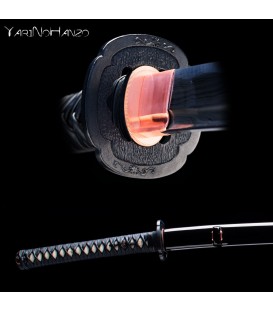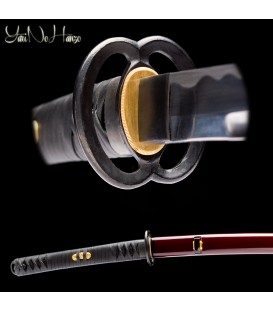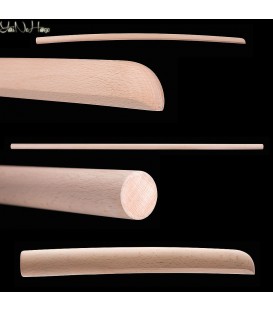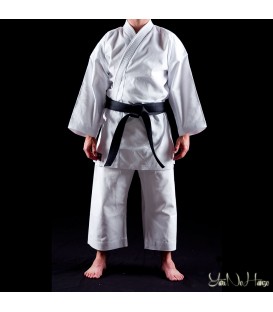Categories
- Handmade Katana, Samurai Swords
- Handmade Iaito Swords
- Shogun PRO Blades
- YariNoHanzo Handmade
- Handmade Bokken
- Collectible mini katanas and Samurai pens
- CUSTOM SWORDS IN STOCK
- Keikogi - Clothing
- Hakama
- Tabi and accessories
- Samurai Swords Accessories
- Maintenance
- Bokuto / Bokken
- Tameshigiri
- Padded Swords
- Bags
- Budogu & Ningu
- BARGAIN CORNER
- BOGU - KENDO ARMOR
- DISCIPLINE
- TRAINING SET | BIG DEAL
- Clothing & Accessories
- Decorative Swords
- BUDOSUMMER 2025
- KATANA SHINKEN - 18TH ANNIVERSARY SPECIAL EDITION!
- KATANA AVAILABLE ON ORDER ONLY
New products
-

NAMI 18TH ANNIVERSARY EDITION XL
YariNoHanzo turns 18 years old!We are pleased to present to you on this...
£690.00 -

Togakure Shinobigatana | Handmade Katana Sword | ED.18 YEARS
YariNoHanzo turns 18 years old!We are pleased to present to you on this...
£690.00 -

Kamakiri | Handmade Katana Sword | ED. 18 YEARS
YariNoHanzo turns 18 years old!We are pleased to present to you on this...
£690.00 -

Sakai | Handmade Katana Sword | ED.18 YEARS
YariNoHanzo turns 18 years old!We are pleased to present to you on this...
£690.00
Top sellers
JAPANESE KATANA SWORD GLOSSARY
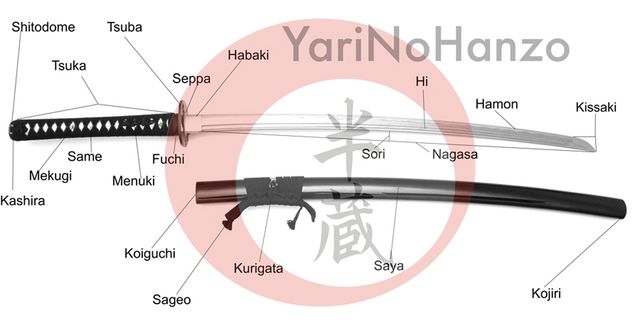
- Hamon: border between the tempered cutting edge of a blade and the untempered part of the rest of the sword.
- Kissaki: the point of the blade, separated from the body of the sword by the Yokote.
- Koiguchi: opening of the Saya.
- Kojiri: end piece on the Saya; it's called Sayajiri as well.
- Kurigata: Knob on the Omote side of the Saya with a hole for the Sageo to go through.
- Mei: swordsmith's signature, usually on the Nakago.
- Mekugi-Ana: hole for the Mekugi.
- Mekugis: bamboo (usally) pegs used to secure Tsuka to Nakago.
- Menuki: decorative metal pieces fitted on the Tsuba to improve grip on the sword.
- Moto-Haba: blade width at the bottom of the blade.
- Moto-Kasane: blade thickness at the bottom of the blade.
- Mune: back edge of a blade.
- Nagasa: blade lenght.
- Nakago: tang, unseen extension of the blade under the Tsuka.
- Sageo: cord, usually made of silk, attached to the Kurikata of the Saya.
- Saki-Haba:blade width from the Kissaki.
- Samé:the belly portion of stingray skin used on top of the wooden Tsuka and below the Ito to improve grip.
- Saya: scabbard for the sword.
- Seppa: a pair of brass (usually) washers around the Tsuba, between the handle and the blade.
- Shitodome: brass (usaully) pieces that fit into the Kashira before the handle is wrapped.
- Sori: curve.
- Sugata: shape of the blade
- Tsuba: hand guard for a sword, different kinds of decoration.
- Tsuka: handle of the sword
- Tsuka-Ito: cotton or silk braid used to wrap the Tsuka.
- Yokote: demarcation line separating the blade from the beginning of the Kissaki.








